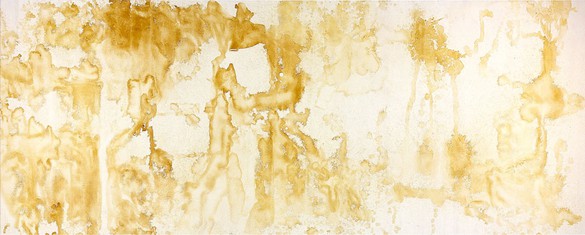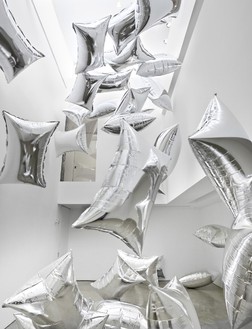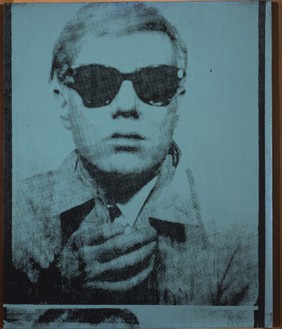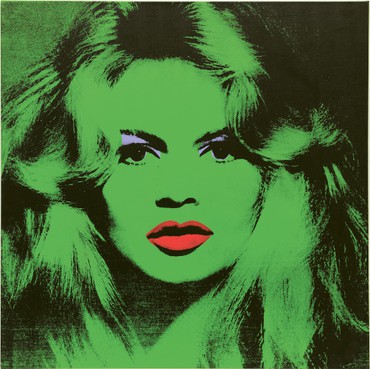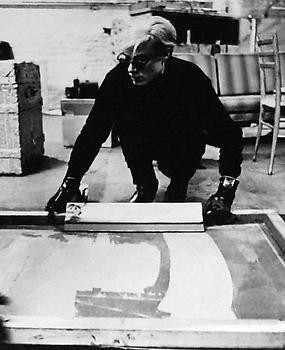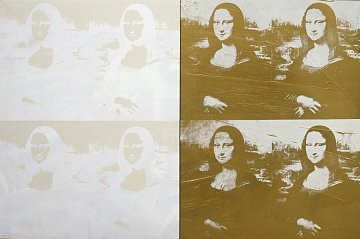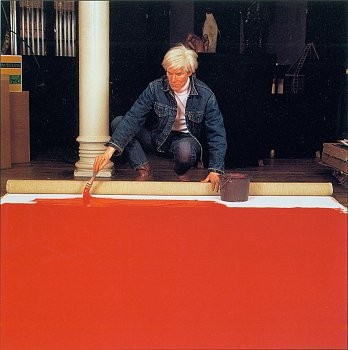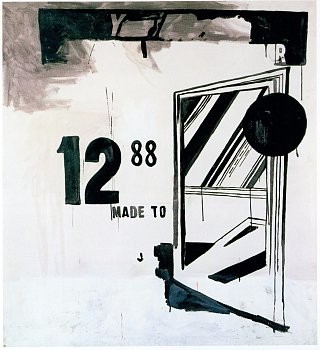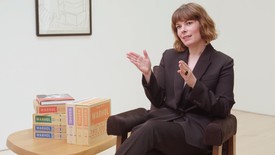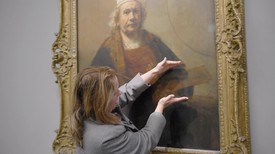About
Isn’t life a series of images that change as they repeat themselves?
—Andy Warhol
Andy Warhol’s (1928–1987) art encapsulates the 1960s through the 1980s in New York. By imitating the familiar aesthetics of mass media, advertising, and celebrity culture, Warhol blurred the boundaries between his work and the world that inspired it, producing images that have become as pervasive as their sources.
Warhol grew up in a working-class suburb of Pittsburgh. His parents were Slovak immigrants, and he was the only member of his family to attend college. He entered the Carnegie Institute of Technology (now Carnegie Mellon University) in 1945, where he majored in pictorial design. After graduation, he moved to New York with fellow student Philip Pearlstein and found steady work as a commercial illustrator at several magazines, including Vogue, Harper’s Bazaar, and the New Yorker. Throughout the 1950s Warhol enjoyed a successful career as a commercial artist, winning several commendations from the Art Directors Club and the American Institute of Graphic Arts. He had his first solo exhibition at the Hugo Gallery in 1952, showing drawings based on the writings of Truman Capote; three years later his work was included in a group show at the Museum of Modern Art for the first time.
The year 1960 marked a turning point in Warhol’s prolific career. He painted his first works based on comics and advertisements, enlarging and transferring the source images onto canvas using a projector. In 1961 Warhol showed these hand-painted works, including Little King (1961) and Saturday’s Popeye (1961), in a window display at the department store Bonwit Teller; in 1962 he painted his famous Campbell’s Soup Cans, thirty-two separate canvases, each depicting a canned soup of a different flavor. Soon after, Warhol began to borrow not only the subject matter of printed media, but the technology as well. Incorporating the silkscreen technique, he created grids of stamps, Coca-Cola bottles, shipping and handling labels, dollar bills, coffee labels, and more, breaking down the images to their basic graphic components.
In 1963 Warhol established a studio on East 47th Street, which became known as the Factory and served as a cultural hub for artists, models, performers, and socialites. His inner circle comprised his Superstars, who played a major role in both his work and his social life. Interested in the production of fame, Warhol began to screen-print images of celebrities and public figures, from Marilyn Monroe and Elvis Presley to Jackie Kennedy and Mao Zedong. Expanding his practice, as well as his cultural influence, he produced records (The Velvet Underground & Nico), started a magazine (Interview), and made avant-garde films, such as Chelsea Girls (1966), Blow Job (1964), and Empire (1964), which have become classics of the underground genre.
Following a close run-in with death when Valerie Solanas shot him in 1968, Warhol entered a more subdued, isolated period, working primarily on a commissioned basis and painting portraits for various patrons, while also revisiting themes from his earlier work. He then began to pursue a new interest in abstraction, first with his Oxidations (1977–78), made by allowing friends and acquaintances to urinate on canvases painted with metallic pigments, and later with his Rorschach (1984) and Camouflage (1986) paintings.
By the early 1980s Warhol was producing work across media with a renewed vigor, hosting half-hour programs on MTV, publishing books, and collaborating with younger artists including Jean-Michel Basquiat, Francesco Clemente, and Keith Haring. His abstract series coincided with large-scale works that looked back at masterpieces by Leonardo da Vinci: he screen-printed images of the Mona Lisa (1503) and created several monumental canvases of The Last Supper (1495–98). Warhol’s ability to seamlessly combine art historical reference, abstract patterns, and mass media set new standards for the role of the artist, permanently blurring the lines between commercial and fine art.
#AndyWarhol
Download
Exhibitions

In Conversation
Christopher Makos and Jessica Beck
Andy Warhol’s Insiders at the Gagosian Shop in London’s historic Burlington Arcade is a group exhibition and shop takeover that feature works by Warhol and portraits of the artist by friends and collaborators including photographers Ronnie Cutrone, Michael Halsband, Christopher Makos, and Billy Name. To celebrate the occasion, Makos met with Gagosian director Jessica Beck to speak about his friendship with Warhol and the joy of the unexpected.
Andy Warhol: Silver Screen
In this video, Jessica Beck, director at Gagosian, Beverly Hills, sits down to discuss the three early paintings by Andy Warhol from 1963 featured in the exhibition Andy Warhol: Silver Screen, at Gagosian in Paris.
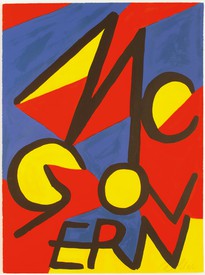
The Art History of Presidential Campaign Posters
Against the backdrop of the 2020 US presidential election, historian Hal Wert takes us through the artistic and political evolution of American campaign posters, from their origin in 1844 to the present. In an interview with Quarterly editor Gillian Jakab, Wert highlights an array of landmark posters and the artists who made them.
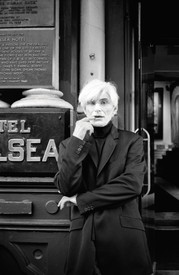
I’ll Be Your Mirror: Allen Midgette
Raymond Foye speaks with the actor who impersonated Andy Warhol during the great Warhol lecture hoax in the late 1960s. The two also discuss Midgette’s earlier film career in Italy and the difficulty of performing in a Warhol film.
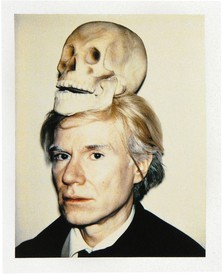
Andy Warhol: From the Polaroid and Back Again
Jessica Beck, the Milton Fine Curator of Art at the Andy Warhol Museum, Pittsburgh, considers the artist’s career-spanning use of Polaroid photography as part of his more expansive practice.
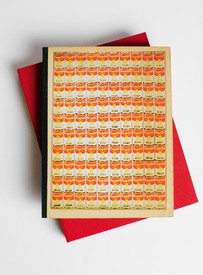
Book Corner
On Collecting with Norman Diekman
Rare-book expert Douglas Flamm speaks with designer Norman Diekman about his unique collection of books on art and architecture. Diekman describes his first plunge into book collecting, the history behind it, and the way his passion for collecting grew.
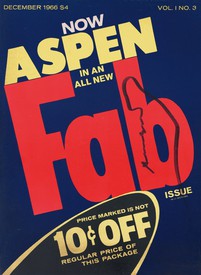
Artists’ Magazines
Gwen Allen recounts her discovery of cutting-edge artists’ magazines from the 1960s and 1970s and explores the roots and implications of these singular publications.
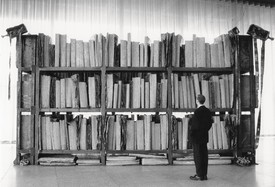
Cast of Characters
James Lawrence explores how contemporary artists have grappled with the subject of the library.
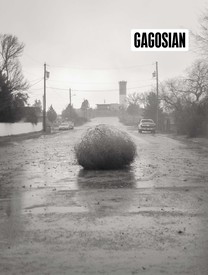
Now available
Gagosian Quarterly Winter 2019
The Winter 2019 issue of Gagosian Quarterly is now available, featuring a selection from Christopher Wool’s Westtexaspsychosculpture series on its cover.
Visions of the Self: Jenny Saville on Rembrandt
Jenny Saville reveals the process behind her new self-portrait, painted in response to Rembrandt’s masterpiece Self-Portrait with Two Circles.
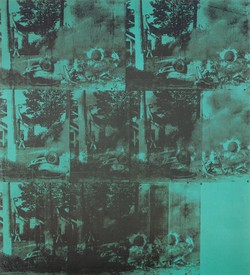
Andy Warhol: Everything Is Good
Richard Hell writes about the “transcendentally camp” Pop artist, portraitist of daily life.
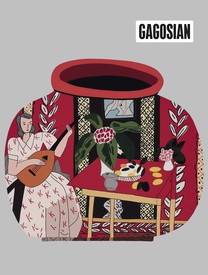
Now available
Gagosian Quarterly Spring 2019
The Spring 2019 issue of Gagosian Quarterly is now available, featuring Red Pot with Lute Player #2 by Jonas Wood on its cover.
Fairs, Events & Announcements
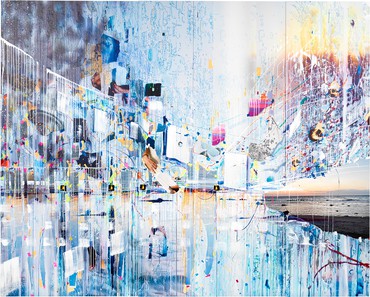
Art Fair
Art Basel Hong Kong 2024
March 27–30, 2024
Hong Kong Convention and Exhibition Centre
www.artbasel.com
Gagosian is participating in Art Basel Hong Kong 2024 with a selection of works by international contemporary artists. The works on view, which embrace a dizzying variety of subjects and approaches, see the participating artists identify fresh ways to disrupt established histories of abstraction and figuration, and instill sculptural and painterly representations of the natural world with complex cultural significance.
Sarah Sze, Turning and Turning, 2024 © Sarah Sze. Photo: Maris Hutchinson
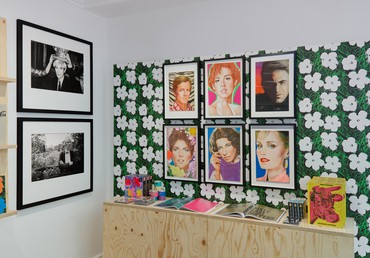
Screening and Talk
Andrew Rossi and Jessica Beck
On Andy Warhol
Monday, June 26, 2023, 7pm
Burlington Arcade, London
Join Gagosian for a film screening and conversation in conjunction with Andy Warhol’s Insiders, a group exhibition and takeover of the Gagosian Shop, London, featuring works by Warhol and portraits of the artist by friends and collaborators. The evening will begin with a screening of an episode of The Andy Warhol Diaries, a six-part series written and directed by Andrew Rossi that takes an in-depth look at the artist’s life and career. Following the screening, Rossi and Gagosian director Jessica Beck, formerly of the Andy Warhol Museum, Pittsburgh, will discuss the diversity of Warhol’s practice, and his love of not only working behind the scenes, but also posing for the camera.
Andy Warhol’s Insiders at the Gagosian Shop, London, 2023. Photo: Prudence Cuming Associates Ltd
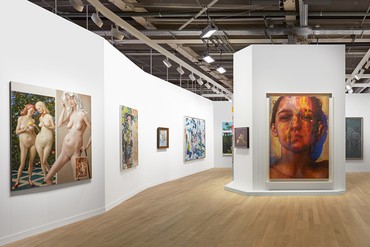
Art Fair
Art Basel 2023
June 13–18, 2022, Hall 2, booth B15
Messe Basel
artbasel.com
Gagosian is pleased to participate in Art Basel 2023 with modern and contemporary works by gallery artists, as well as special entries in the Unlimited and Parcours sections of the fair.
Gagosian’s presentation in the main section of Art Basel represents the breadth and diversity of the gallery’s programming through work by artists including John Currin, Andreas Gursky, Simon Hantaï, Tetsuya Ishida, Jia Aili, Jamian Juliano-Villani, Ewa Juszkiewicz, Rick Lowe, Nathaniel Mary Quinn, Sarah Sze, Mary Weatherford, Anna Weyant, Rachel Whiteread, Stanley Whitney, and Jordan Wolfson, among others. Also featured are iconic works by Willem de Kooning, Gerhard Richter, Cy Twombly, and Andy Warhol.
Gagosian’s booth at Art Basel 2023. Artwork, left to right: © John Currin; © Rudolf Stingel; © 2023 Estate of Pablo Picasso/Artists Rights Society (ARS), New York; © 2023 The Willem de Kooning Foundation/Artists Rights Society (ARS), New York; © Jonas Wood; © Anna Weyant; © Jenny Saville; © Cy Twombly Foundation. Photo: Sebastiano Pellion di Persano
Museum Exhibitions
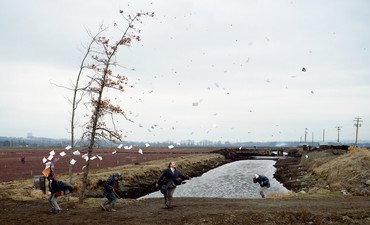
Closing this Week
Capturing the Moment
Through April 28, 2024
Tate Modern, London
www.tate.org.uk
Capturing the Moment explores the relationship between photography and painting through iconic artworks from the modern era. The exhibition examines how the two distinct mediums have shaped each other and how artists have blurred the boundaries to capture moments in time. Work by Francis Bacon, Georg Baselitz, John Currin, Andreas Gursky, Pablo Picasso, Jeff Wall, and Andy Warhol is included.
Jeff Wall, A Sudden Gust of Wind (after Hokusai), 1993, Tate Modern, London © Jeff Wall

On View
ICP at 50
From the Collection, 1845–2019
Through May 6, 2024
International Center of Photography, New York
www.icp.org
ICP at 50 is a thematic exploration of the many processes that comprise the history of the photographic medium, drawn from the International Center of Photography’s holdings. The institution was established in 1974 and the exhibition offers insight into the breadth and depth of its collection which spans from the nineteenth century to the present day. Work by Richard Avedon, Nan Goldin, Deana Lawson, and Andy Warhol is included.
Installation view, ICP at 50: From the Collection, 1845–2019, International Center of Photography, New York, January 24–May 6, 2024. Artwork, left to right: © Nan Goldin, © Zanele Muholi, © Deana Lawson. Photo: Jeenah Moon, courtesy International Center of Photography
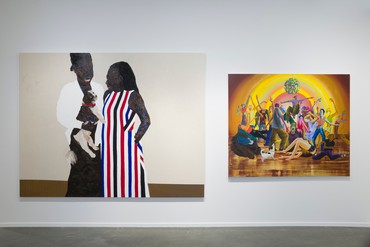
On View
Some Dogs Go to Dallas
Through May 12, 2024
Green Family Art Foundation, Dallas
www.greenfamilyartfoundation.org
Some Dogs Go to Dallas presents a selection of works from the collection of Pamela and David Hornik. Ardent dog lovers, the Horniks have a penchant for acquiring pieces depicting canines across eras, locations, and techniques from throughout the art historical canon. The diversity of this collection underscores the universality of the human connection with animals and the profoundly enduring love that those bonds create. Work by Amoako Boafo and Andy Warhol is included.
Installation view, Some Dogs Go to Dallas, Green Family Art Foundation, Dallas, February 10–May 12, 2024. Artwork, left to right: © Amoako Boafo, © Maggie Ellis. Photo: Evan Sheldon
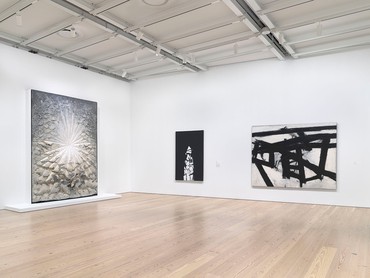
On View
The Whitney’s Collection
Selections from 1900 to 1965
Opened June 28, 2019
Whitney Museum of American Art, New York
whitney.org
This exhibition of more than 120 works, drawn entirely from the Whitney’s collection, is inspired by the founding history of the museum. The Whitney was established in 1930 by Gertrude Vanderbilt Whitney to champion the work of living American artists. A sculptor and a patron, Whitney recognized both the importance of contemporary American art and the need to support the artists who made it. The collection she assembled foregrounds how artists uniquely reveal the complexity and beauty of American life. Work by Jay DeFeo, Willem de Kooning, Roy Lichtenstein, Man Ray, Ed Ruscha, Andy Warhol, and Tom Wesselmann is included.
Installation view, The Whitney’s Collection: Selections from 1900 to 1965, Whitney Museum of American Art, New York, June 28, 2019–May 2022. Artwork, left to right: © 2020 The Jay DeFeo Foundation/Artists Rights Society (ARS), New York; © Norman Lewis; © 2020 The Franz Kline Estate/Artists Rights Society (ARS), New York. Photo: Ron Amstutz
